Early Bird
Deadline
January 31, 2026
Judging
Date
May 18, 2026
Winners
Announced
June 10, 2026
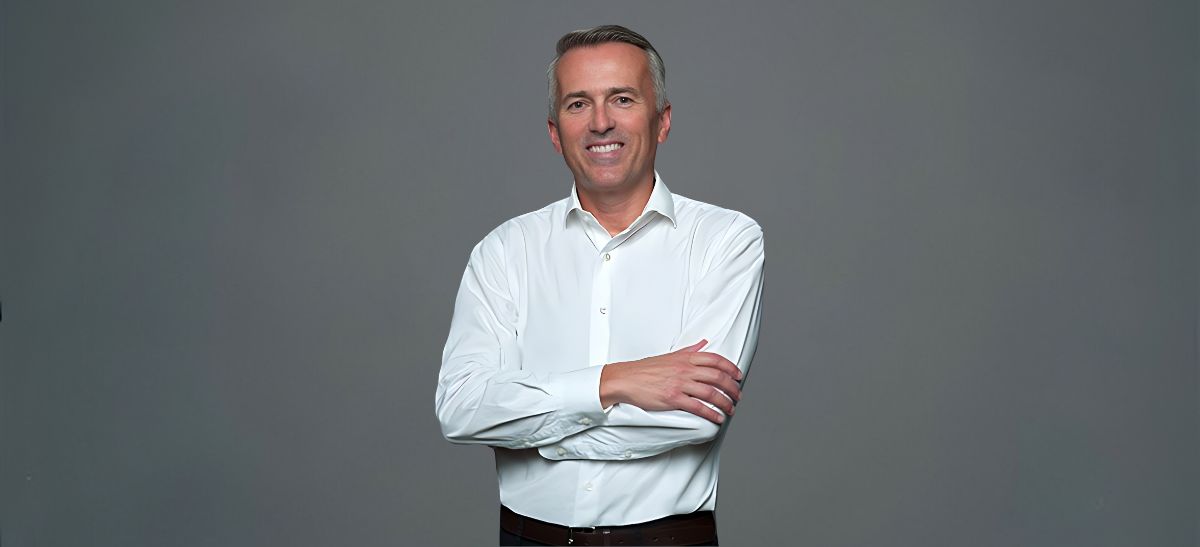
In the dynamic world of winemaking, Château d'Esclans has emerged as a trailblazer, blending innovation with tradition. Led by Paul Chevalier, Vice President at Moët Hennessy USA, Château d'Esclans has not only elevated the status of rosé but also spearheaded sustainability initiatives, setting new standards for the industry. In this exclusive conversation, we delve into the intricate details of Château d'Esclans' approach to sustainability, consumer-driven trends, and the art of crafting premium rosé.

Image: Located in France's Côtes de Provence, Château d'Esclans
Paul: Our project is a five-year plan to help save the world’s beaches and coastlines; therefore, the Beach by Whispering Angel’s commitment to environmental responsibility is demonstrated through its partnerships with the Surfrider Foundation & Save The Med and its ambitions about cleaning the oceans and protecting the planet. With the reach of the brand, we intend to inspire its dedicated community of enthusiasts to protect what they love through individual actions, such as volunteering at beach clean-ups and choosing to patronize ocean-friendly restaurants that prioritize sustainability.
Paul: Since the first vintage (2006) Château d’Esclans has made high-quality wines working in harmony with the environment (ex. no use of pesticides or herbicides) by the Good Agricultural Practices and Clean Production protocols. As of 2023, we have also obtained the French government’s HVE (High-Value Environmental) Level 3 certification. The next steps will be to minimize the use of precious resources and reduce the carbon footprint (ex. solar panels to produce our electricity and improved water management using catch & storage water basins throughout our vineyards and property).
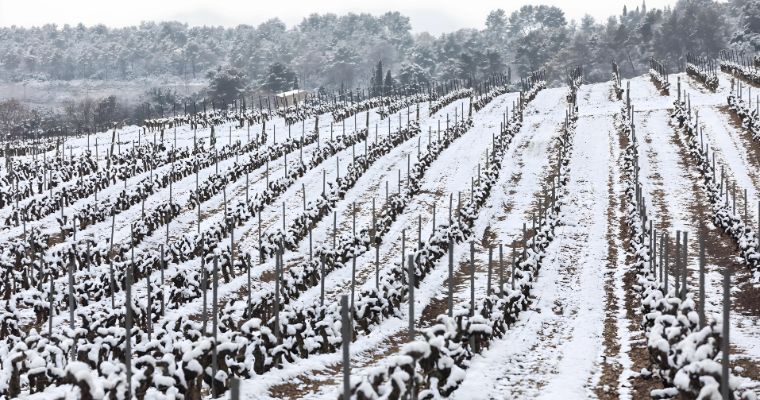
Image: Château d’Esclans in the winter
Paul: The biggest challenge remains in the production of the glass bottles that we use (which is, to be honest mostly related to the carbon footprint of the production of the glass itself…). Then the second dilemma concerns the aging process of a wine in the glass bottle itself versus the choice of another material. As we are producing “age-worthy” rosés at Château d’Esclans, this also makes things more complicated.
Paul: The main insight that we observed during the roll-out of the Beach by Whispering Angel was that the connection with our consumer base was not just mainly with a younger demographic (Gen Z, etc.), but very much across all generations. Especially when the topic relates to a worldwide issue that everyone can identify with (and in our case; even those consumers who do not physically live near the ocean or a beach showed interest, which therefore doesn’t link the product to any specific geographic locations…
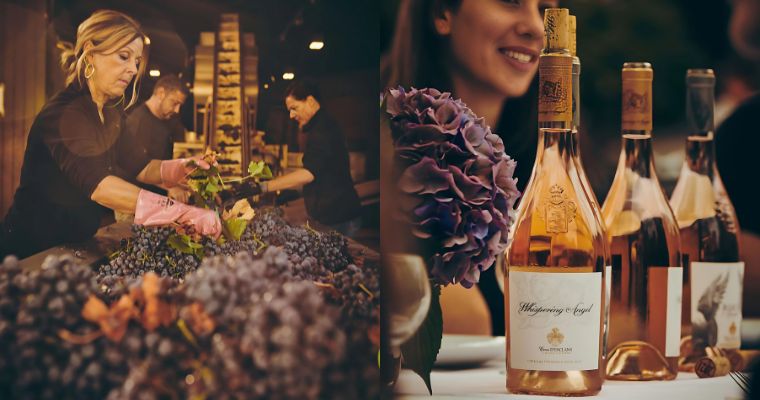
Image: Harvest at Château d'Esclans and a bottle of Whispering Angel
Paul: The premium rosé category has a bright future ahead. The biggest challenge we have is that many wine consumers (and wine experts/opinion leaders alike…) still think of rosé as an inferior product compared to a red or even white wine. Château d’Esclans will continue to lead and help overcome this misconception through education (which includes championing the region of Provence and its appellations).
Paul: The key point of difference in our portfolio of luxury rosé is the richness and depth of our wines (which is directly related to the terroir in our valley combined with our innovative winemaking techniques, such as barrel-fermentation and oak aging). The best way I would describe this is a combination of elegance with a powerful finish. Multidimensional wines with complexity, so now a style of rosé that can be taken more seriously by fine wine consumers and aficionados.
Paul: The “magic” of the rise of the Whispering Angel brand has a lot to do with how we connect with consumers. To begin with; our rosé is produced by a team who loves and knows wine, so the style that we produce is a wine that is very pleasing and extremely easy to drink, yet it has more mouthfeel and therefore more satisfaction. Secondly, this same team has traveled ceaselessly around the world for the past eighteen years to share our passion for the product. And making sure that the brand was always found on the wine list in iconic hotels and restaurants which have now become our partner accounts in over 100 countries. This was the vision of Sacha Lichine from day one as he understood the importance of being in the “right” places and creating a taste profile that people wanted to drink.
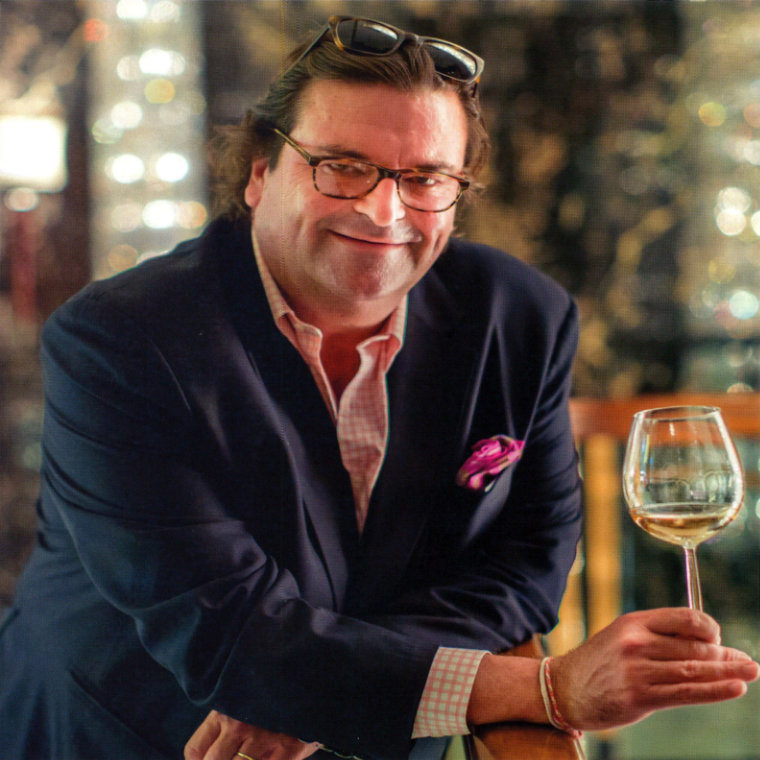
Image: Sacha Lichine
Paul: Miami has been my home in the U.S. since the birth of Whispering Angel; so after almost a generation of teaching and preaching about it, we certainly have a strong foothold and following in the rapidly expanding South Florida market. It is the rosé of choice of many local celebrities, athletes, and socialites. Also, the Miami “outdoor” lifestyle is a perfect fit for the brand (which includes the aspect of healthy eating, exercise, and reducing sugar in one’s diet). The extremely dry flavor profile of Whispering Angel connects to many consumers who live in Miami and are looking for beverage alternatives that are low in sugar.
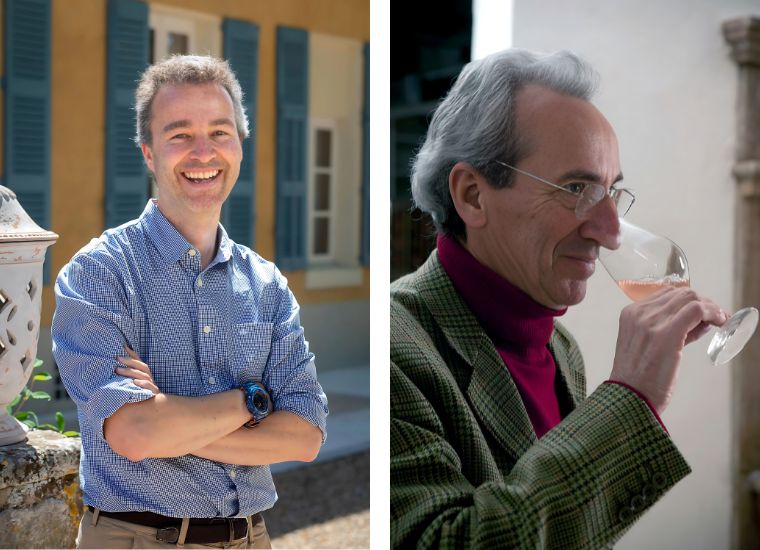
Image: From Left - Bertrand Leon and Patrick Leon
Paul: The idea of creating a barrel-fermented rosé in Provence was quite audacious because lighter styles of wines in most cases do not stand up very well to this process and the final result can be a product that ends up over-extracted and hence out of balance. A key part of our savoir-faire and the winemaking process at Château d’Esclans is identifying which exact lots of our future rosés (which are generally from our best terroirs and oldest vines) spend the time in these oak barrels (600L demi muids) and give birth to our top cuvées. Every vintage since our beginnings in 2006 has been an ongoing experiment to perfect this new style of rosé in Provence. What has been exciting to see is that the “precision” of these cuvées becomes more and more focused each year. And this for me is “rosé trailblazing”.
Paul: The DNA of both the Les Clans and Garrus cuvées begins with our two favorite grape varieties which are found in Provence: Grenache & Rolle (AKA Vermentino). No other varieties ever enter into these final blends. Each grape variety provides its specific characteristics, but ultimately the blend becomes superior to the stand-alone varietal. And of course, the terroir and barrel aging also add in depth and complexity. But to understand what we are trying to achieve with this new style of rosé from Provence, one must first start by accepting that the lighter color in the wine does not necessarily equate to a wine of less structure and body. This can be counterintuitive to most as generally the absence of color in a red wine would result in a lighter taste profile. The “wow” factor when someone tastes Garrus for the first time is they literally “didn’t see it coming” when the wine explodes on the palate. Voila…, and a new emotion is created.
Paul: The biggest advantage of the partnership with Moët Hennessy is the group’s worldwide sales structure and teams which is a fantastic platform to help introduce our rosés to more and more wine & spirit consumers. In addition, you also can add in the exposure and collaborations with the rest of the LVMH group (Fashion, Perfumes, Cosmetics, Watches & Jewelry), so the reach within the luxury space is pretty much unlimited. And, this is a very unique opportunity for a winery to expand far beyond the boundaries of the traditional wine trade.
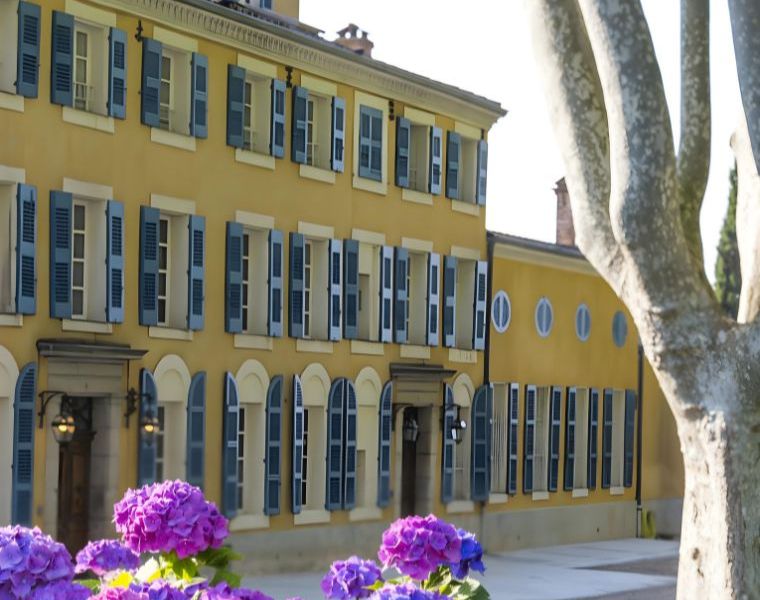
Image: Château d’Esclans
Paul: We will be spending more time in 2024 in the Asian markets (including our participation in trade shows such as ProWine Singapore & ProWine Tokyo). Many Asian consumers are eager to learn about wine in general, so we believe the time is right to educate about the virtues of our rosés from Provence.
[[relatedPurchasesItems-61]]
As we conclude our insightful discussion with Paul Chevalier, it becomes clear that Château d'Esclans is not merely a winery; it's a symbol of innovation, sustainability, and the evolving palate of wine enthusiasts. The commitment to environmental responsibility, premiumization, and the fusion of tradition with modern techniques positions Château d'Esclans at the forefront of the ever-evolving wine industry. Through this conversation, we witness not only the success story of a winery but also a glimpse into the future of rosé and sustainable winemaking.
In conversation with Malvika Patel, Editor and VP, Beverage Trade Network
Enter your Wines now and get in front of top Sommeliers, Wine Directors, and On-Premise Wine Buyers of USA.
